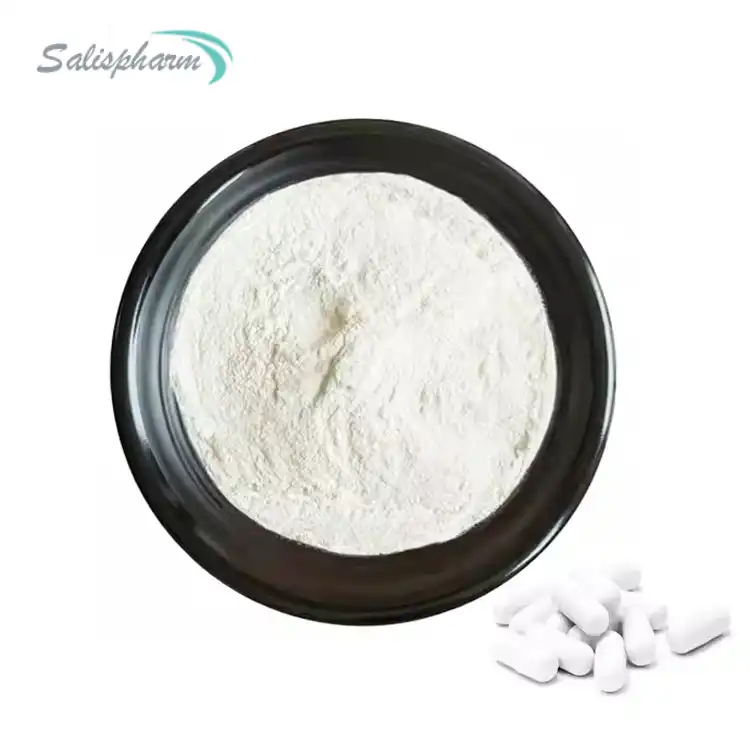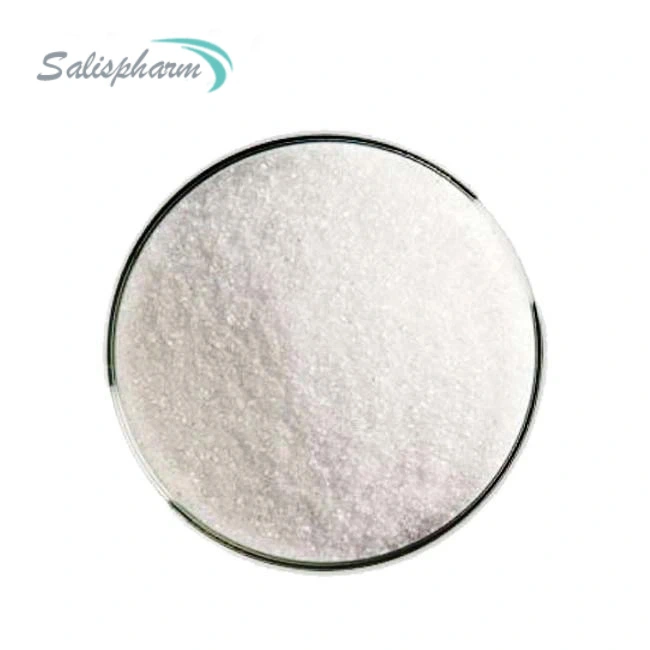Levofloxacin is a synthetic broad-spectrum antibiotic that belongs to the fluoroquinolone class of antibiotics. It is commonly used to treat a wide range of bacterial infections, including respiratory tract infections, urinary tract infections, and skin infections. The powder form of levofloxacin is often used in the manufacturing of various pharmaceutical formulations, such as tablets, capsules, and intravenous solutions. In this blog post, we will explore the potency of levofloxacin powder as an antibiotic and address some frequently asked questions related to its use and effectiveness.
What is the mechanism of action of levofloxacin powder?
Levofloxacin powder works by inhibiting the activity of two essential bacterial enzymes, DNA gyrase and topoisomerase IV, which are responsible for the replication and repair of bacterial DNA. By disrupting these enzymes, levofloxacin prevents the bacteria from replicating and ultimately leads to their death. This mechanism of action makes levofloxacin effective against a broad spectrum of gram-positive and gram-negative bacteria, including those that are resistant to other antibiotics.
One of the key advantages of levofloxacin is its ability to penetrate cells and tissues effectively, allowing it to reach and eliminate bacteria in various parts of the body. This feature makes it particularly useful in treating infections that occur in deep tissues or in areas where antibiotics have limited penetration.
The inhibition of DNA gyrase and topoisomerase IV by levofloxacin is a multi-step process. Initially, levofloxacin binds to these enzymes, forming a stable complex. This complex then interacts with the bacterial DNA, causing double-strand breaks and preventing further DNA synthesis and replication. As a result, the bacterial cell is unable to replicate, and its growth is inhibited, ultimately leading to cell death.
Levofloxacin's broad-spectrum activity is attributed to its ability to target both gram-positive and gram-negative bacteria. Its mechanism of action is effective against a wide range of bacterial species, including those that cause common infections, such as pneumonia, urinary tract infections, and skin and soft tissue infections.
How does the potency of levofloxacin powder compare to other antibiotics?
Levofloxacin powder is considered a potent antibiotic, particularly against gram-negative bacteria. Its potency is comparable to or even higher than many other commonly used antibiotics, such as ciprofloxacin and other fluoroquinolones. However, it is important to note that the potency of an antibiotic can vary depending on the specific bacterial strain and the site of infection.
In general, levofloxacin powder is highly effective against a wide range of bacterial pathogens, including those that cause respiratory tract infections (e.g., Streptococcus pneumoniae, Haemophilus influenzae, and Moraxella catarrhalis), urinary tract infections (e.g., Escherichia coli and Klebsiella pneumoniae), and skin and soft tissue infections (e.g., Staphylococcus aureus and Streptococcus pyogenes).
Compared to other fluoroquinolones, such as ciprofloxacin, levofloxacin has been shown to have increased potency against certain bacterial species, particularly gram-positive pathogens like Streptococcus pneumoniae and Staphylococcus aureus. This enhanced potency is attributed to the structural modifications made to the levofloxacin molecule, which improve its binding affinity to the target enzymes and increase its overall antibacterial activity.
Furthermore, levofloxacin has demonstrated superior tissue penetration compared to some other fluoroquinolones, allowing it to reach and treat infections in difficult-to-access sites, such as the prostate gland and the respiratory tract. This characteristic makes levofloxacin a valuable option for treating infections in these areas.
It is essential to note that while levofloxacin is a potent antibiotic, its effectiveness can be diminished by the development of bacterial resistance. Overuse or misuse of antibiotics, including levofloxacin, can contribute to the emergence of resistant strains, reducing the potency of the drug against these pathogens. Therefore, it is crucial to follow proper antibiotic stewardship practices and use levofloxacin judiciously to preserve its efficacy.
What are the potential side effects and precautions associated with levofloxacin powder?
While levofloxacin powder is generally well-tolerated, it can cause various side effects, some of which may be severe. Common side effects include nausea, diarrhea, headache, dizziness, and insomnia. More serious side effects, although rare, may include tendon rupture, peripheral neuropathy, and cardiovascular problems.
It is important to note that levofloxacin powder, like other fluoroquinolones, has been associated with an increased risk of tendinitis and tendon rupture, particularly in older adults and those who engage in strenuous physical activity. Patients with a history of tendon disorders or who are taking corticosteroids are at higher risk for these adverse effects.
Levofloxacin powder should be used with caution in certain populations, such as pregnant or breastfeeding women, children, and individuals with renal or hepatic impairment, as it may require dose adjustments or alternative treatment options.
Tendon-related side effects are among the most concerning adverse effects associated with levofloxacin and other fluoroquinolones. These side effects can range from mild tendinitis to complete tendon rupture, which can be debilitating and require surgical intervention. The risk of tendon-related side effects appears to increase with age, concomitant use of corticosteroids, and underlying conditions such as rheumatoid arthritis or renal impairment.
Levofloxacin has also been linked to an increased risk of peripheral neuropathy, a condition characterized by damage to the peripheral nerves, which can cause numbness, tingling, and weakness in the extremities. This side effect is typically reversible upon discontinuation of the drug, but in some cases, the symptoms may persist.
Cardiovascular side effects, such as QT prolongation (a change in the electrical activity of the heart), have also been reported with levofloxacin use. This can potentially lead to an increased risk of arrhythmias (abnormal heart rhythms) in some individuals. Patients with pre-existing heart conditions or those taking medications that may prolong the QT interval should be closely monitored when taking levofloxacin.
Other potential side effects of levofloxacin include gastrointestinal disturbances (e.g., nausea, vomiting, diarrhea), central nervous system effects (e.g., headache, dizziness, insomnia), and hypersensitivity reactions (e.g., rash, anaphylaxis).
It is essential to discuss the potential risks and benefits of levofloxacin with a healthcare provider before starting treatment. Patients should report any adverse effects promptly and follow the prescribed dosage and duration of therapy strictly.
Conclusion
Levofloxacin powder is a potent broad-spectrum antibiotic that is effective against a wide range of bacterial infections. Its mechanism of action and ability to penetrate tissues make it a valuable treatment option in various clinical settings. However, like any antibiotic, it should be used judiciously and under the guidance of a healthcare professional to minimize the risk of side effects and the development of antibiotic resistance. Proper dosing, monitoring, and adherence to treatment guidelines are essential for maximizing the benefits of levofloxacin powder while minimizing potential risks.
It is crucial to remember that antibiotics, including levofloxacin, are not a one-size-fits-all solution, and their use should be tailored to individual patient circumstances and the specific infection being treated. Overuse or misuse of antibiotics can contribute to the development of antibiotic resistance, which is a growing global public health concern.
To combat antibiotic resistance, healthcare professionals and patients must work together to promote responsible antibiotic use. This includes prescribing antibiotics only when necessary, adhering to the prescribed dosage and duration of treatment, and implementing infection control measures to prevent the spread of resistant bacteria.
Furthermore, ongoing research and development efforts are focused on developing new antibiotics and exploring alternative treatment strategies to address the challenge of antibiotic resistance. These efforts aim to enhance our ability to combat bacterial infections effectively while minimizing the risks associated with current antibiotic therapies.
If you are also interested in this product and want to know more product details, or want to know about other related products, please feel free to contact sasha_slsbio@aliyun.com.
References:
1. Levofloxacin. (n.d.). In Drugs.com.
2. Levofloxacin. (2022). In StatPearls.
3. Hooper, D. C., & Rubinstein, E. (2003). Quinolone antimicrobial agents. American Society for Microbiology Press.
4. Mandell, G. L., Bennett, J. E., & Dolin, R. (2010). Mandell, Douglas, and Bennett's principles and practice of infectious diseases. Churchill Livingstone/Elsevier.
5. Goldstein, E. J., Citron, D. M., & Merriam, C. V. (2004). Comparative in vitro activities of levofloxacin, ciprofloxacin, gatifloxacin, moxifloxacin, and trovafloxacin against aerobic and anaerobic bacteria. Antimicrobial Agents and Chemotherapy, 48(7), 2593-2598.
6. Owens, R. C., & Ambrose, P. G. (2005). Antimicrobial safety: Focus on fluoroquinolones. Clinical Infectious Diseases, 41(Supplement_2), S144-S157.
7. Lipsky, B. A., & Baker, C. A. (1999). Fluoroquinolone toxicity profiles: A review focusing on newer agents. Clinical Infectious Diseases, 28(2), 352-364.
8. Fish, D. N., & Chow, A. T. (1997). The clinical pharmacokinetics of levofloxacin. Clinical Pharmacokinetics, 32(2), 101-119.
9. Bertino, J., & Fish, D. (2000). The safety profile of the fluoroquinolones. Clinical Therapeutics, 22(7), 798-817.
10. Lipsky, B. A., & Baker, C. A. (1999). Fluoroquinolone toxicity profiles: A review focusing on newer agents. Clinical Infectious Diseases, 28(2), 352-364.







